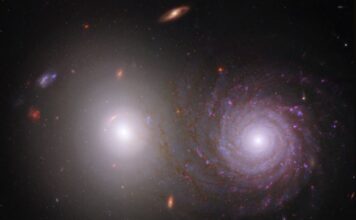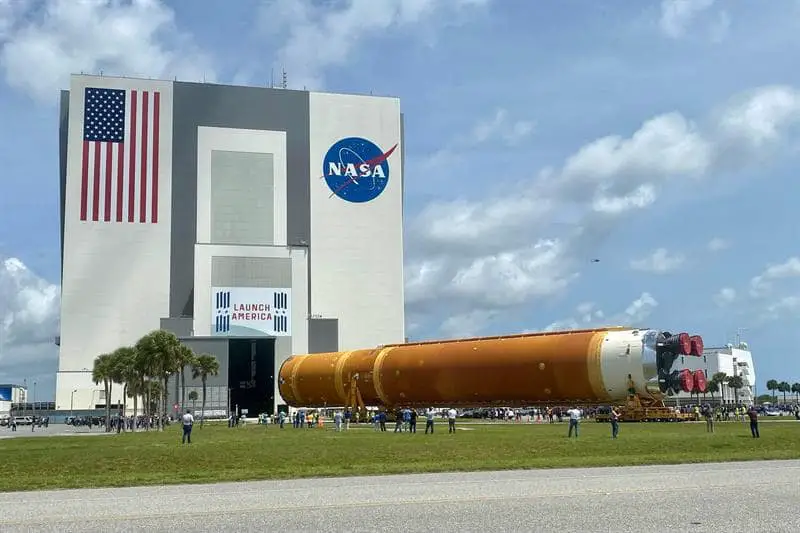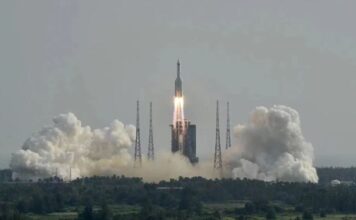A rogue star recently eaten by a black hole may help scientists understand more complex black hole feeding.
NASA’s multiple telescopes recently observed a massive black hole tearing apart a star that got too close.
Located at the center of another galaxy about 250 million light-years from Earth, it is the fifth example of a black hole destroying a nearby star so far observed.
Once the star is completely torn apart by the black hole’s gravity, astronomers see a dramatic increase in high-energy X-rays around the black hole,
This suggests that an extremely hot halo forms around the black hole as stellar material is pulled towards it.
NASA’s NuSTAR (Nuclear Spectroscopic Telescopic Array) satellite can sensitively observe these wavelengths, and this event provides an unprecedented view of the formation and evolution of the halo.
The research was published in the Astrophysical Journal.
This type of black hole destruction of a star is known as tidal disruption, and it provides insight into what happens to the material captured by the black hole behemoth before it is completely swallowed.
Most black holes that scientists can study are surrounded by hot gas that accumulates over years, sometimes thousands of years, forming a disk billions of miles across.
In some cases, the disk is brighter than the entire galaxy. A ripped star stands out even around bright sources, especially around less active black holes.
From start to finish, it usually takes just a few weeks or months. The observability and short duration of the tidal disruption process make it particularly attractive for astronomers to tease out how a black hole’s gravity acts on surrounding matter, creating incredible light shows and new physical features.
Co-author Suvi Gezari, an astronomer at STScI (Space Telescope Science Institute) in Baltimore, said: “Tidal disruption is a kind of cosmic laboratory, our window into the massive black holes lurking at the centers of galaxies in real time.
Surprising Sign
The new study focuses on an event called AT2021ehb, which occurred in a galaxy with a central black hole about 10 million times the mass of the sun (about the difference between a bowling ball and Titanic).
The side of the star closest to the black hole is pulled more than the side farther from the black hole, tearing the entire star apart, leaving only a long cloud of hot gas.
Hot gas would billow around the black hole, colliding with each other, thought to create shock waves and outflows, producing visible light, as well as wavelengths invisible to the human eye such as ultraviolet light and X-rays.
The hot gas then settles into the disk that swirls around the black hole, like water swirling in a drain, and the friction of the hot gas produces low-energy X-rays.
In the case of AT2021ehb, the sequence of events took place in just 100 days.
The event was first detected on March 1, 2021 by the Zwicky Transient Facility (ZTF) at the Palomar Observatory in Southern California.
This was followed by NASA’s Neil Gehrels Swift Observatory satellite and the Neutron star Interior Composition Explorer (NICER) space telescope (which observes longer X-ray wavelengths than the former).
NASA’s NuSTAR began observing the system about 300 days after the event was first detected.
Scientists were surprised when NuSTAR detected the halo, a cloud of hot plasma that usually accompanies jets of gas flowing in the opposite direction from a black hole.
However, AT2021ehb’s tidal disruption has no jets, making the observed halo unexpected.
The halo emits more energetic X-rays than any part of the black hole, but scientists don’t know where the hot plasma comes from or how it gets so hot.
“We’ve never seen a situation without jets, and an X-ray TDE like this represents the possibility of unraveling what causes the jets and the halo. The observations of AT2021ehb are consistent with the idea that the magnetic field is involved in the formation of the corona, and we wondered what makes the magnetic field so strong. ” said Yuhan Yao from Caltech.
Yao is also leading the search for more TDEs discovered by the ZTF and then observed with telescopes such as Swift, NICER and NuSTAR.
Each observation provides new insights to confirm what has been observed with AT2021ehb and other tidal disruption events.




